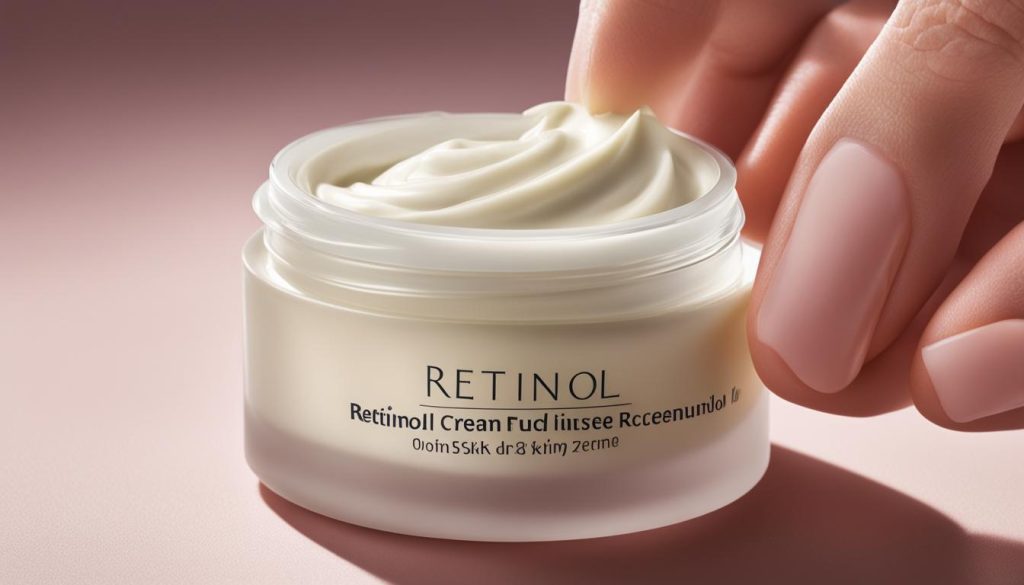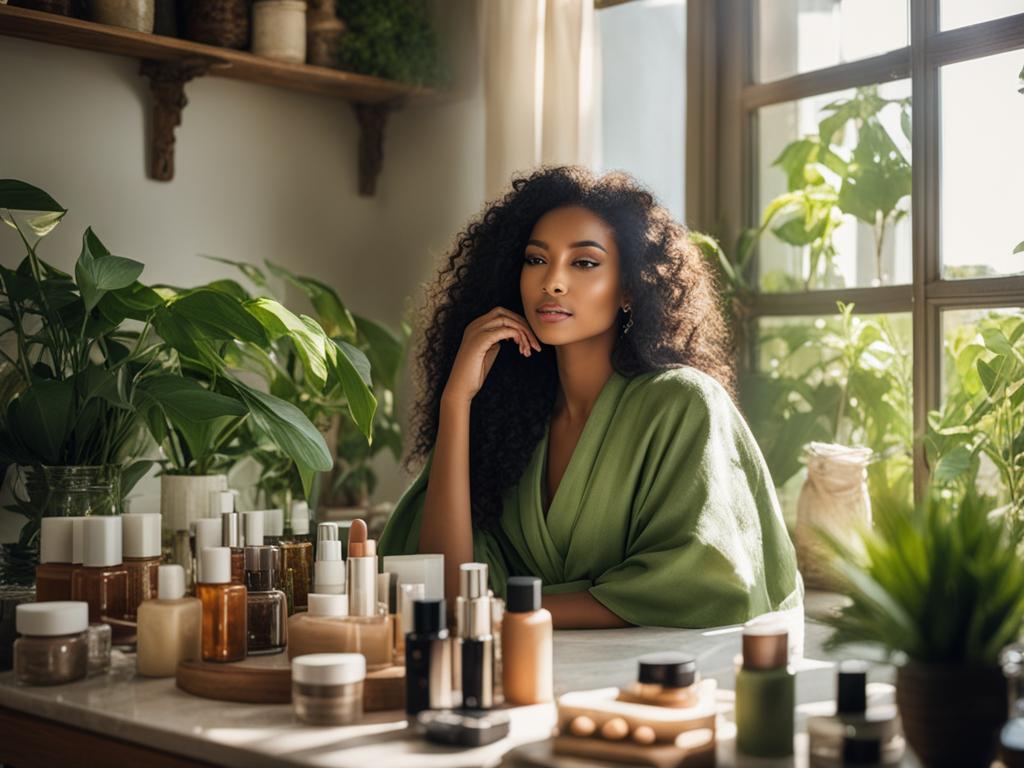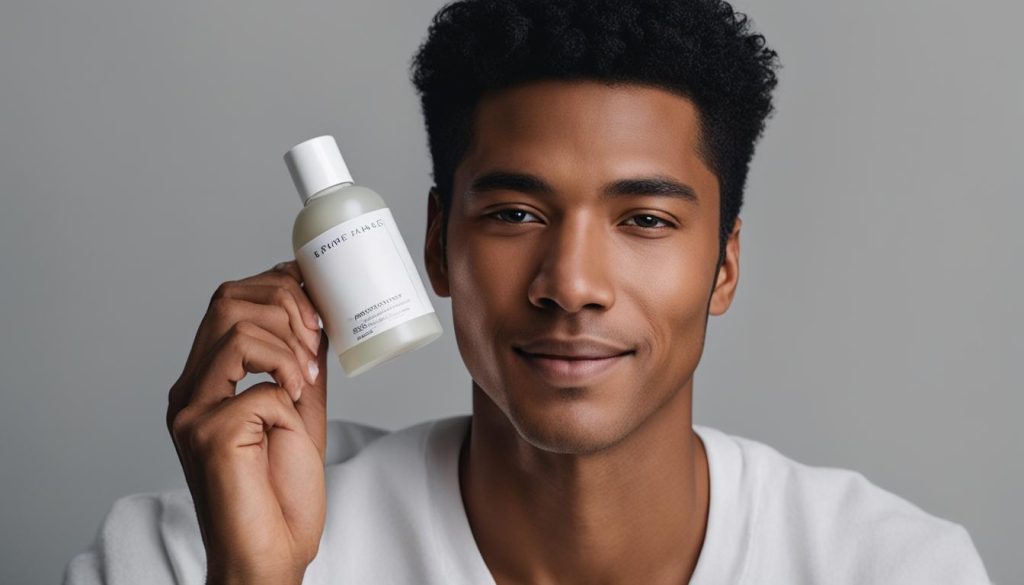In my quest for vibrant, youthful skin, I’ve uncovered that a breadth of naturally orchestrated activities beneath my surface orchestrate what we see in the mirror every day. Paramount among these is the skin cycle—a process of skin cell turnover, skin renewal, and skin regeneration that dictates the complexion’s overall appearance and health. Comprehending this cycle can drastically refine one’s skincare regimen.
I’ve learned that epidermal turnover and dermal cell turnover are critical phases where old cells are sloughed off, making way for fresh, vibrant skin to emerge. But beyond simple biology, I’ve embraced the importance of aiding this natural progression through tailored skincare practices that encourage skin cell regeneration without causing undue stress or harm to these intricate layers.
Intriguingly, the wisdom passed down from renowned dermatologists suggests that less is genuinely more when it comes to caring for our skin. By providing our skin with the necessary respite between potent treatments, we are not just being considerate of its delicate nature—we’re granting it the agency to heal, refresh, and thrive.
Skin Cycle
- Understanding the skin cycle is key to maintaining healthy, radiant skin.
- Proper skin cell turnover is essential for skin renewal and regeneration.
- Staggered use of skincare treatments can benefit both epidermal and dermal cell turnover.
- Rest periods are crucial in any skincare routine to promote skin cell regeneration effectively.
- Learning to listen to my skin’s needs allows for a more personalized and effective approach to skincare.
Introduction to Skin Cycle and Its Importance
As an avid advocate for holistic skincare, I’ve come to appreciate the profound impact that a cycle skincare routine can have on one’s complexion. Grasping the essence of skin cycling schedule and learning how to skin cycle are not just modern skincare practices but are keys to unlocking the potential of one’s skin. By systematically alternating potent skin treatments with necessary recovery periods, the skin care cycle harmoniously blends exfoliation, treatment, and recovery stages to optimize our skin’s natural rhythm of regeneration.
Starting with a night dedicated to skin exfoliation, we effectively sweep away accumulated dead cells, promoting a natural shedding process or skin shedding. This primes our skin for subsequent treatments, such as the application of retinoids, which have a starring role on the next night. Not only do they visibly address concerns like fine lines and wrinkles, but they also enhance the skin turnover rate, playing a crucial part in the cycle of renewal.
What follows is equally critical—the rest period. It’s a time when the biology of our skin takes center stage, allowing for skin renewal without the interference of additional actives. This deliberate pause in the routine helps mitigate the risk of over-exfoliation and irritation. It’s a testament to the idea that sometimes, what our skin truly needs is a moment to breathe and recalibrate.
- Exfoliation Phase: Kickstart the skin’s rejuvenation by clearing away the old.
- Treatment Phase: Introduce active ingredients to target specific concerns.
- Recovery Phase: Allow the skin to naturally repair and fortify its barrier.
This structured approach to self-care doesn’t just appeal to one’s desire for order; it’s grounded in a respect for the skin’s inherent processes. The wave-like pattern of the cycle coaxes our largest organ into a state of balance where every phase complements the last. By incorporating this skincare philosophy into my regimen, I’m not just following a trend—I’m embracing a sustainable, science-backed path to lasting skin health.
Decoding the Four-Night Skin Cycle Trend
As a beauty enthusiast, my explorations on social media, specifically, through the vibrant TikTok community, have revealed an intriguing approach to a skin care routine that’s rapidly gaining popularity. It’s called the four-night skin cycle, a methodical process aiming to enhance both dermal and epidermal cell turnover. But what makes it a viral sensation, and how can it be integrated into your current regimen? Let’s delve into the details.

Exfoliation: The Key to Unlocking Skincare Potency
Anyone immersed in the world of skin care routine TikTok knows that exfoliation is the cornerstone of this trend. It prepares the skin by stripping away dead cells to reveal a refreshed canvas, optimizing uptake and effectiveness of subsequent treatments. However, it’s imperative for me to highlight moderation in skin exfoliation, ensuring the skin’s barrier remains intact—too much could lead to potential damage.
Retinoids: Harnessing the Transformative Power of Vitamin A Derivatives
When I introduce retinoids into this cycle, I’m employing a powerhouse ingredient renowned for diminishing fine lines and enhancing skin texture. The concept of skin cycling retinol is intentionally spaced to avoid overwhelming the skin, instead nurturing gradual and visible transformation while maintaining the delicate balance required for effective results without irritation.
Recovery Nights: Promoting Repair and Rejuvenation
Restoration is just as pivotal as action in any skin care routine. That’s why recovery nights are central to this four-night strategy. It’s during these nights that hydration is focused on and the reparative processes, especially after retinol application, take precedence. These recovery periods are when I pay homage to my skin’s natural rhythms, allowing a time of respite to stimulate dermal cell turnover and support regeneration.
Tailoring the Schedule: Variations for Different Skin Types
Not all skin is created equal—this mantra holds particularly true for the four-night skin cycle. I find that customizing the process according to my skin’s response is key. It’s all about observing and respecting how my skin reacts, then adjusting the exfoliation intensity or the strength of the retinoids I use. By doing so, this innovative skin care routine becomes a tailored artifact in my beauty arsenal, capable of addressing my unique skin concerns while championing its health.
Optimizing the Benefits of a Skin Cycling Schedule
My exploration into the realm of skin care led me to the critical understanding of skin cycling, a concept that focuses on the timing and rotation of skincare products to achieve the pinnacle of skin regeneration and skin cell regeneration. As someone committed to sharing insights on effective skincare, I’ve discovered that integrating rest days into your regimen can significantly enhance cell turnover and contribute to the overall skin rejuvenation efforts.
Central to this approach is the strategic use of a moisturizer, which supports the skin’s natural repair mechanisms during its downtime. By alternating active product nights with recovery nights, my skin is granted the reprieve necessary for repairing and fortifying its barrier—an essential defense against environmental aggressors.
- Consistency in product application, more than frequency, proves to be a cornerstone in nurturing and maintaining a youthful glow.
- Allowing the epidermal and dermal layers ample time to rejuvenate reduces potential irritation, showcasing that less is indeed more when it comes to high-powered skincare.
- Thoughtful scheduling of rest periods punctuates my skin cycle, optimizing absorption of beneficial ingredients on active nights.
My adoption of this tailored approach not only underscores the importance of personalized skincare but also exemplifies how a calculated cycle can amplify the benefits reaped from each product. It’s a harmonious blend of diligent care and well-deserved rest that yields a visage reflecting vitality and health.

Striking the Right Balance with Exfoliation and Retinoids
Embarking on a meticulous skin care routine necessitates recognizing the pivotal role of balance — particularly when integrating potent agents such as exfoliants and retinoids into my regimen. It’s about nurturing the skin cell regeneration and cell turnover process, tactfully timing each component for optimal skin rejuvenation. As I’ve learned, wielding these skincare tools with precision is crucial. I ensure that my skin is not over-exfoliated, to maintain its natural barrier, and that retinoids are applied in a frequency that harmonizes with my skin’s threshold — a bespoke methodology endorsing consistent skincare.
I’ve deduced from experience and ample research that a harmonious interchange between exfoliation and retinoids can elevate my skin’s health to its pinnacle. By adhering to a cycle that respects the intrinsic timing of my skin’s renewal properties, the vitality of my complexion is amplified. The judicious use of exfoliants paves the way for retinoids to perform their rejuvenating dance. However, their potential to agitate necessitates restraint, and it’s in this delicate dance — the dosed intervals and calculated rests — that the magic of a truly transformative skin care routine unfolds.
Finding the golden ratio in my skincare takes patience and attentiveness to how my skin reacts to various strengths and frequencies of exfoliation and retinol application. It’s a personal journey towards understanding the rhythm of my skin’s needs. When I hit the sweet spot, the benefits manifest as a testament to the efficacy of balanced, considerate care. In an era of beauty filled with an abundance of options, recognizing the unique tempo of my skin’s cycle has been instrumental in crafting a consistent skincare practice that sustains and celebrates my skin’s natural propensity for skin rejuvenation.
Striking the Right Balance with Exfoliation and Retinoids
What is a skin cycle?
The skin cycle, or skin cell turnover, refers to the process by which new skin cells are created in the deeper layers of the skin and travel to the surface to replace dead cells. This cycle is a crucial part of the skin’s natural skin renewal process and skin regeneration, helping the skin maintain its health and appearance.
How does the epidermal turnover differ from dermal cell turnover?
Epidermal turnover is the shedding and replacement of the outermost layer of the skin, the epidermis. This happens relatively quickly, typically within about 28 days. Dermal cell turnover, on the other hand, involves the deeper skin layers and happens at a slower rate, as it includes the production of components like collagen and elastin, which are vital for the skin’s structure and elasticity.
Why is skin cell regeneration important?
Skin cell regeneration is essential because it helps maintain the skin’s integrity, resilience, and appearance. It repairs damage from environmental stressors, such as UV rays and pollution, and is crucial for wound healing. Proper skin cell regeneration can lead to a clearer, more youthful-looking complexion.
How do I begin a cycle skincare regimen?
To start a skin cycling schedule, first establish a routine that includes exfoliation, treatment with active ingredients (like retinoids or other actives), and rest. Begin with exfoliation to remove dead skin cells, follow up with targeted treatments, and allow your skin days to recover. Tailor the frequency and products based on your skin’s responses and needs.
Why is a skin care cycle important for skin renewal?
A skincare cycle promotes skin renewal by balancing active treatments with rest periods. This prevents over-exfoliation and irritation while encouraging the skin’s natural regenerative processes. Regular cycling helps maintain an optimal skin turnover rate, leading to healthier skin.
What are the signs of skin shedding from exfoliation?
Skin shedding, or the peeling of dead skin cells, typically appears as flaking or slight peeling after exfoliation. This is a normal part of the skin renewal cycle and shows that the exfoliation is working. However, excessive redness or irritation may indicate over-exfoliation.
What is the four-night skin cycle?
The four-night skin cycle is a trending skincare routine in which you alternate between exfoliation, retinoid application, and recovery over four nights. The cycle typically includes one night of exfoliation, one night of retinoid use, and two subsequent nights of rest or hydration-focused skincare.
How do retinoids fit into the skin cycling schedule?
Retinoids are typically used on the second night of the skin cycling schedule. These vitamin A derivatives help stimulate collagen production, combat aging signs, and improve skin texture. Their inclusion promotes skin rejuvenation but requires careful use to avoid irritation.
Why are recovery nights crucial in skin cycling?
Recovery nights are essential as they give the skin time to rest, repair, and rehydrate after the application of potent active ingredients like exfoliants and retinoids. They are crucial for maintaining the skin barrier’s health and preventing over-stimulation or irritation.
How can I tailor my skin cycling schedule for sensitive skin?
For sensitive skin, you may extend the recovery period or reduce the concentration of active ingredients. Using gentler exfoliants and retinoids less frequently or in lower doses can also help. It’s imperative to listen to your skin and adjust the cycle based on how your skin responds.
How does skin regeneration benefit from a skin cycling schedule?
A skin cycling schedule balances the use of active ingredients with rest periods, which optimizes skin regeneration. During recovery nights, the skin can focus on cell turnover without the stress of additional actives, promoting efficient skin cell regeneration and overall skin rejuvenation.
What role does a moisturizer play in skin cycling?
Moisturizers play a significant role during recovery nights in skin cycling. They help to hydrate the skin, rebuild the skin barrier, and provide a protective layer that aids in the healing and rejuvenation process following the use of exfoliants and retinoids.
How often should I exfoliate when skin cycling?
Exfoliation frequency in skin cycling should be tailored to individual skin types and tolerance. Generally, once within the four-night cycle is recommended to strike a balance between effectiveness and avoiding irritation. Pay attention to how your skin reacts and adjust accordingly.
Can I use retinoids every night in my skincare routine?
It is not typically recommended to use retinoids every night, especially for those new to them or with sensitive skin. Incorporating retinoids into a skin cycling routine allows for their benefits without overwhelming the skin, reducing the risk of irritation and promoting a gentle approach to skin rejuvenation.
What’s the importance of consistency in a skin care routine involving skin cycling?
Consistency is key to achieving long-term benefits in any skincare routine, including skin cycling. A regular schedule allows the skin to adapt to active ingredients, supports the natural skin cell regeneration process, and ensures continual skin rejuvenation without overstimulation.






